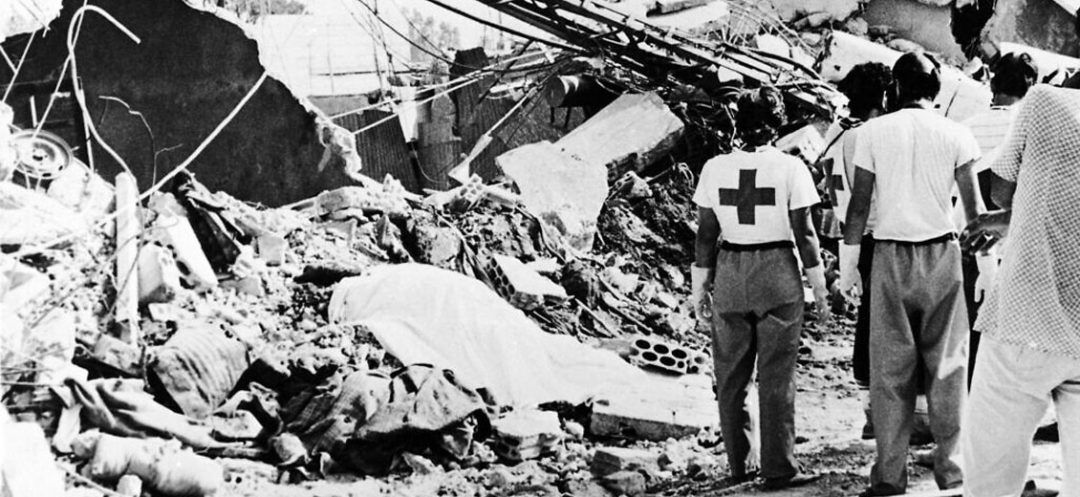
©For over 50 years the regional powers have wreaked havoc and caused chronic instability in the country. Credit: AP Photo/Nash
The documentary titled “Casse du siècle au Liban,” or Heist of the Century in Lebanon, aired on Tuesday night on the Arte channel, is riddled with omissions and frequently neglects the imperative of intellectual honesty that should guide a journalist. It was truly a textbook case of information withholding, reality deformation, and blatant bias in presenting the facts.
In terms of the conceptual framework and global journalistic level, before even discussing details, the documentary first overlooks the fundamental debate that has been unfolding in the country since the 2019 crisis emerged: Is the underlying issue above all corruption, or rather deliberate assaults on the sovereignty of the central state? Simply put, should we attribute the true roots of the economic and financial collapse, and therefore the foundation for implementing radical solutions, to the insatiable corruption and mafia-like practices of certain high-ranking politicians? Or conversely, are they rooted in the deconstruction strategy of the state along with the entire political, economic, and even cultural system, skillfully orchestrated over many years, even decades?
The documentary contends that the confessional system is to blame for the “heist of the century.” However, it overlooks that since the late 1960s, Lebanon has faced repeated and successive assaults from regional forces that have spared no effort in undermining the authority of the central government. It began as early as 1969 with the establishment of Palestinian armed organizations, continued with the Syrian occupation and its permanent destabilization strategy, and now includes the Iranian Anschluss attempt facilitated by Hezbollah’s patient and diabolical deconstruction efforts since 2005. Our colleague Sahar el-Attar aptly pointed out that the solution lies in building a state, in every sense of the term. However, the documentary's authors overlooked the significance of this insight or chose not to ponder it.
In detail, it is astonishing that the documentary omitted any reference to the mafia-like practices of the Syrian "tutor,” who drained not less than 2 billion dollars annually from the Lebanese market between 1977 and 2005, as informally estimated. It also failed to mention the mafia-type networks established by Syrians within various public administrations, as highlighted in a 2005 study led by our colleague Nicolas Sbeih at Commerce du Levant.
Furthermore, in discussing the downward spiral evident since 2015, the documentary avoids mentioning the significant adverse financial and economic consequences of Hassan Diab’s government’s unprecedented decision not to pay its debts — a first in Lebanon's history. Despite being portrayed, at the very height of cynicism, as (partially) reformist, Diab’s administration embodied the main corrupt and corrupting centers of power! Are the documentary's authors aware of the serious allegations of insider trading surrounding Diab's cabinet decision, influenced by financial “advisors,” to default on its Eurobond debts?
Furthermore, there’s no mention of the policy of subsidizing essential goods (mainly gasoline and flour) that Hezbollah has implemented to sustain extensive smuggling operations into Syria and support a Syrian regime notorious for corruption. It has forced the Lebanese State to deepen its public deficit (thus depleting bank deposits) to meet the Syrian population's needs at the expense of Lebanese taxpayers. This situation greatly benefits Hezbollah, which earns substantial and regular income from controlling the Syrian borders, hence continuously violating the sovereignty of the central state. This prompted an expert to observe that the Lebanese State is forced to essentially provide for the livelihoods of “two populations and two countries!”
Regarding the electricity dossier, the documentary fails to mention the roughly 40 billion dollars withdrawn from Lebanese deposits held at the Central Bank (BDL) and poured into this sector. Over more than 10 years, these funds were managed by the chief corrupt figure, sanctioned by the US administration, and a key ally of the state “deconstructor” and primary saboteur of national sovereignty.
However, one of the most serious shortcomings lies in demonizing the entire banking sector, depicted as the main accomplice in the “heist of the century.” The documentary omits that banks were forced to deposit 15 percent of their foreign currency holdings with the Central Bank of Lebanon (BDL). Furthermore, their capacity to invest abroad was limited by the provisions of the Central Bank.
Furthermore, the BDL concurrently adopted a policy of high interest rates to incentivize banks to deposit more funds with it. This strategy positioned the Central Bank as a secure and profitable source of earnings at a time when local market investment opportunities were limited.
Some certainly criticize the banks for not sufficiently assessing the risks of financing a state handed over to predominantly mafia-like officials. However, it is important to note that in 2014, the president of the banking association, François Bassil, publicly highlighted that banks could no longer afford to generously finance the state. He advocated for ending this practice at that time. He had faced intense pressure from those who actually wielded (and still wield) decision-making power and even received direct threats that forced him to backtrack on this issue.
In a country subjected to over fifty years of relentless foreign destabilization strategies and systematic state deconstruction, it is particularly deplorable to present a simplistic interpretation of events based on withholding information.
Indeed, these regional interferences were undoubtedly facilitated by the active complicity of local actors. However, isn’t this a common feature of any foreign occupation worldwide? Surprisingly, the documentary does not refer to this reality. It is crucial to highlight that in professional journalism, deliberately omitting information is akin to deceiving public opinion — a practice that can be both deliberate and hazardous.
Read more




Comments